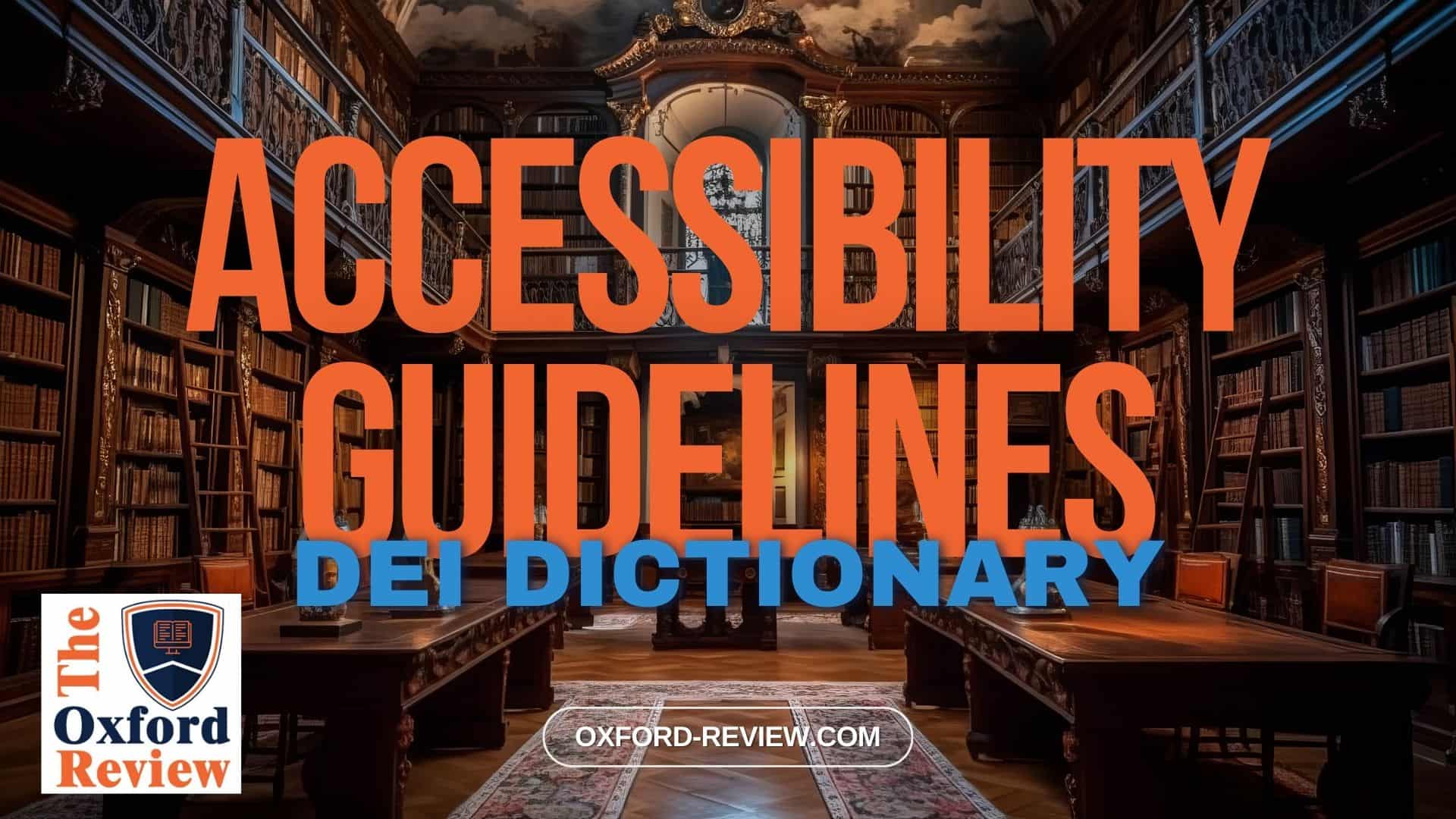Accessibility Guidelines – Definition and Explanation

Understanding Accessibility Guidelines: A Key to Inclusive Design
Accessibility guidelines play a pivotal role in creating an inclusive environment, ensuring that everyone, regardless of ability, can access and interact with digital content seamlessly. In the realm of Diversity, Equity, and Inclusion (DEI), adherence to accessibility guidelines is paramount for fostering equal opportunities and breaking down barriers.
Definition:
Accessibility guidelines refer to a set of standards and best practices aimed at making digital content, websites, software, and technology accessible to individuals with disabilities. These guidelines outline specific criteria and techniques to enhance the usability and inclusivity of digital platforms, enabling people with diverse abilities to perceive, understand, navigate, and interact with online content effectively.
Importance of Accessibility Guidelines:
- Inclusivity: Accessibility guidelines promote inclusivity by ensuring that everyone, including individuals with disabilities such as visual, auditory, motor, or cognitive impairments, can participate fully in the digital world.
- Legal Compliance: Adhering to accessibility guidelines helps organisations comply with legal requirements such as the Equality Act and the Web Content Accessibility Guidelines (WCAG), which mandate equal access to digital content for all users.
- Enhanced User Experience: By following accessibility guidelines, developers and designers can create user-friendly interfaces that provide a seamless and intuitive experience for all users, leading to higher engagement and satisfaction.
- Expanded Audience Reach: Accessible websites and applications cater not only to individuals with disabilities but also to a broader audience, including older adults, individuals with temporary impairments, and those accessing content in challenging environments.
Example:
Consider a retail website implementing accessibility guidelines to improve user experience for individuals with visual impairments. The website incorporates features such as:
- Alt Text for Images: Providing descriptive alternative text for images allows screen reader users to understand the content of images, enhancing their browsing experience.
- Keyboard Navigation: Implementing keyboard navigation ensures that users who cannot use a mouse can navigate through the website using keyboard shortcuts, improving accessibility for individuals with motor impairments.
- Contrast Ratio: Adhering to contrast ratio guidelines ensures that text is legible against its background, benefiting users with low vision or colour blindness.
Conclusion:
In conclusion, accessibility guidelines serve as a cornerstone of inclusive design, fostering diversity, equity, and inclusion in the digital realm. By embracing these guidelines, organisations can create accessible digital experiences that empower all individuals to participate fully in the online world. Prioritising accessibility not only aligns with ethical principles but also enhances user satisfaction, expands audience reach, and ensures legal compliance.
References:
Caldwell, B., Cooper, M., Reid, L. G., Vanderheiden, G., Chisholm, W., Slatin, J., & White, J. (2008). Web content accessibility guidelines (WCAG) 2.0. WWW Consortium (W3C), 290, 1-34. https://ysu.edu/sites/default/files/mathematics-achievement-center/Hawkes%20Learning_Web%20Content%20Accessibility%20Guidelines%20(WCAG)%202.0.pdf
Chisholm, W., Vanderheiden, G., & Jacobs, I. (2001). Web content accessibility guidelines 1.0. Interactions, 8(4), 35-54. https://dl.acm.org/doi/abs/10.1145/379537.379550
Ballantyne, M., Jha, A., Jacobsen, A., Hawker, J. S., & El-Glaly, Y. N. (2018, November). Study of accessibility guidelines of mobile applications. In Proceedings of the 17th international conference on mobile and ubiquitous multimedia (pp. 305-315). https://dl.acm.org/doi/abs/10.1145/3282894.3282921
Harper, S., & Chen, A. Q. (2012). Web accessibility guidelines: A lesson from the evolving Web. World Wide Web, 15, 61-88. https://link.springer.com/article/10.1007/s11280-011-0130-8
Jaeger, P. T., & Xie, B. (2009). Developing online community accessibility guidelines for persons with disabilities and older adults. Journal of Disability Policy Studies, 20(1), 55-63. https://journals.sagepub.com/doi/abs/10.1177/1044207308325997
Be impressively well informed

Get the very latest research intelligence briefings, video research briefings, infographics and more sent direct to you as they are published
Be the most impressively well-informed and up-to-date person around...
